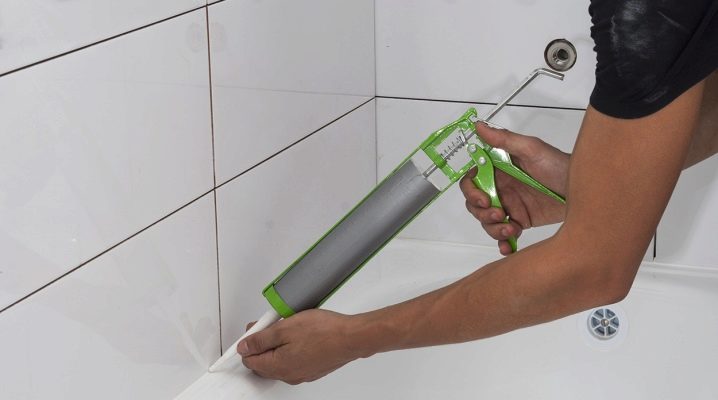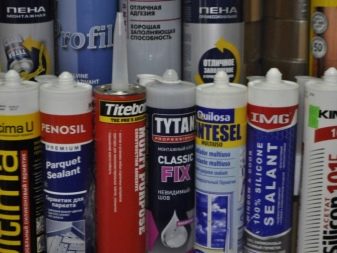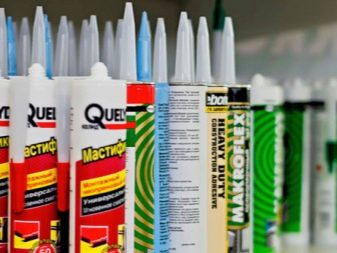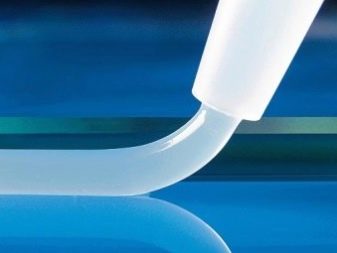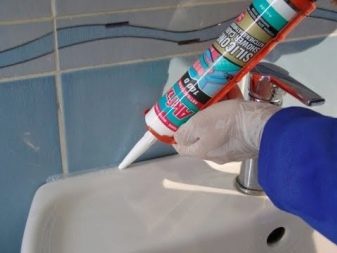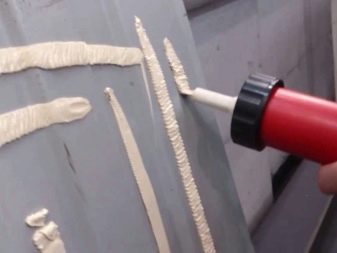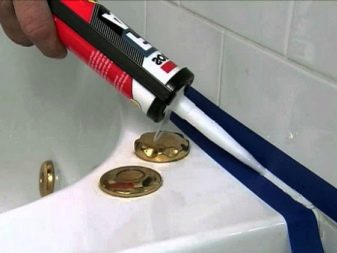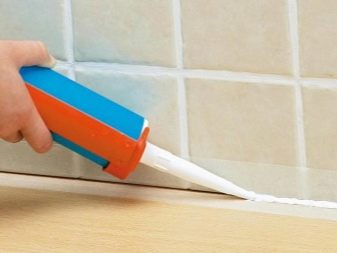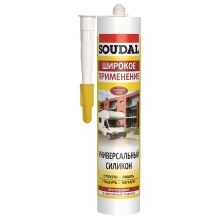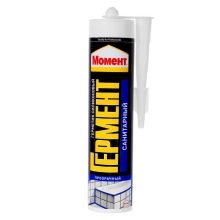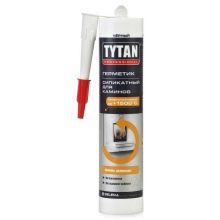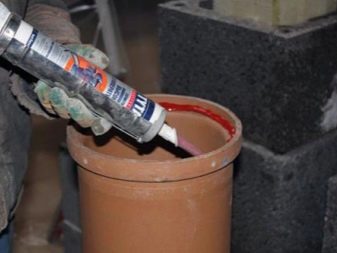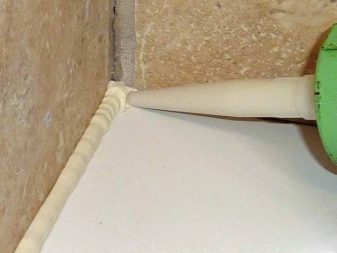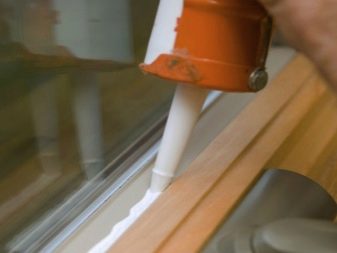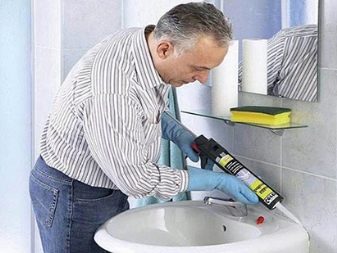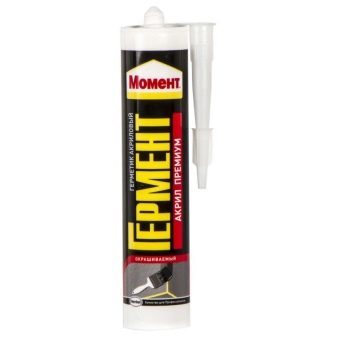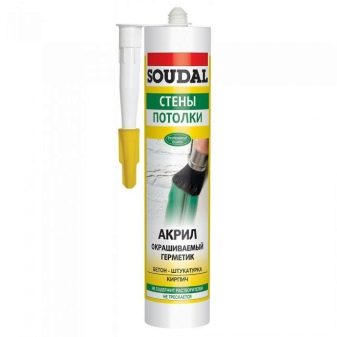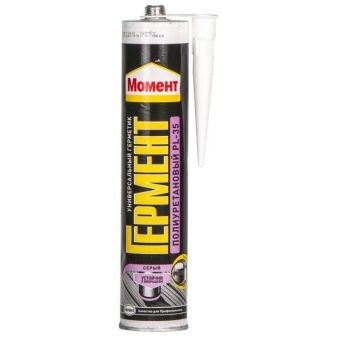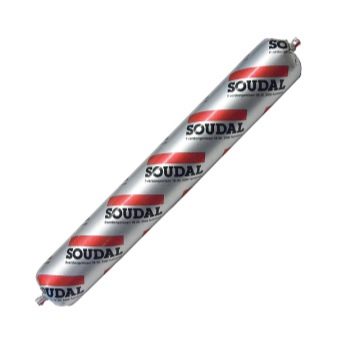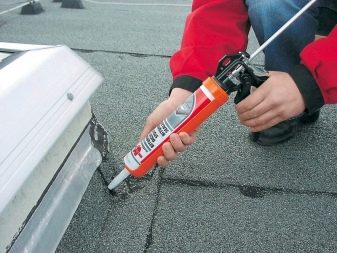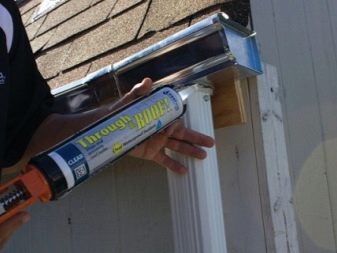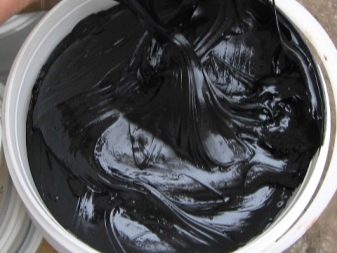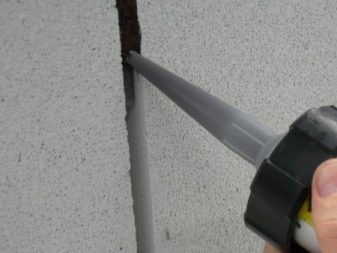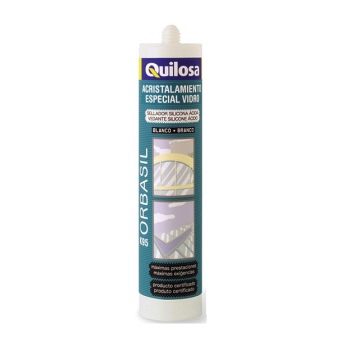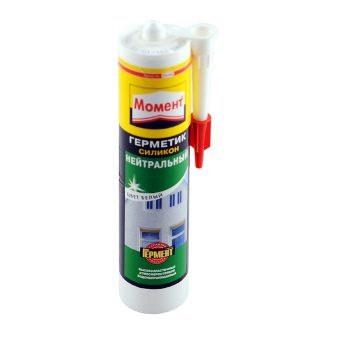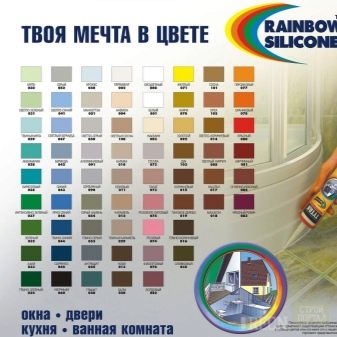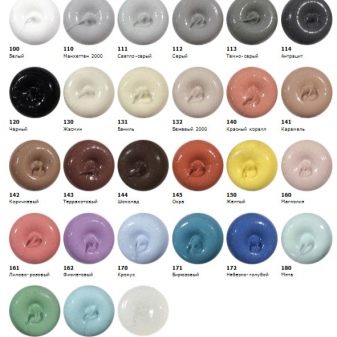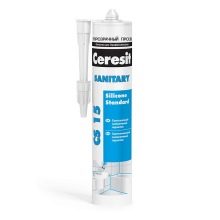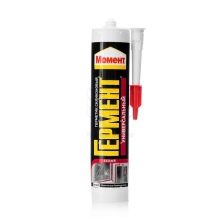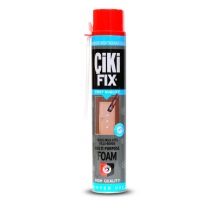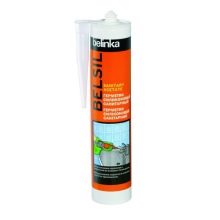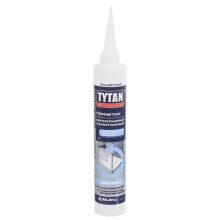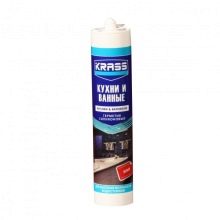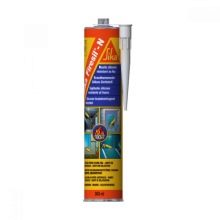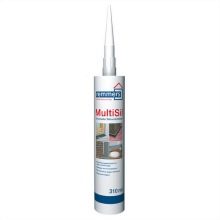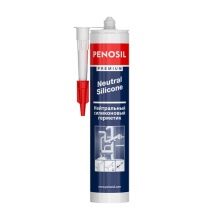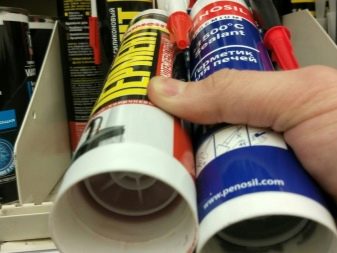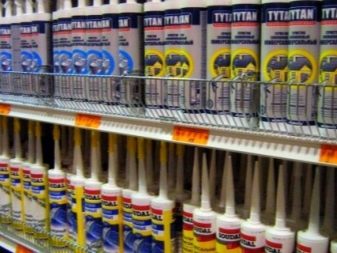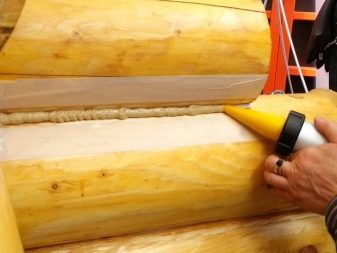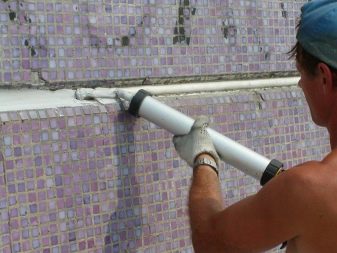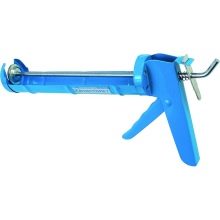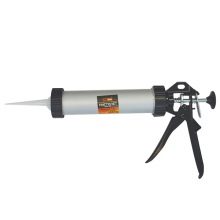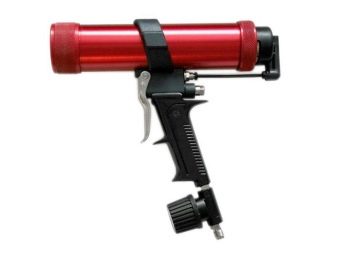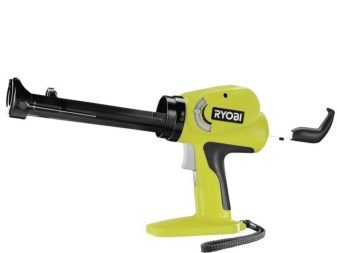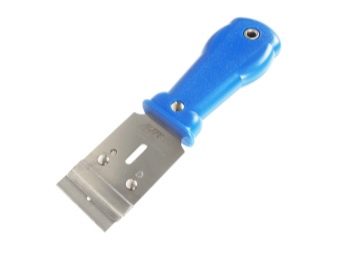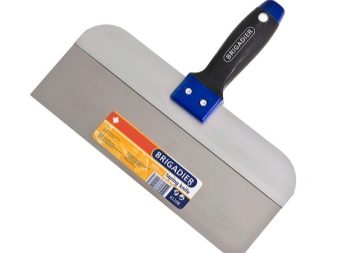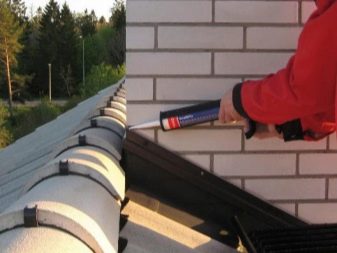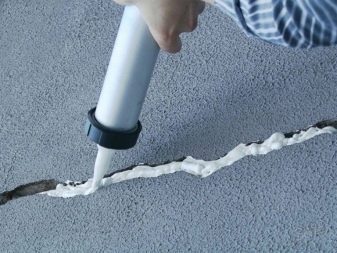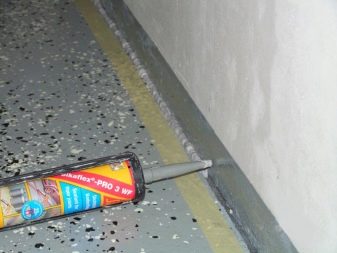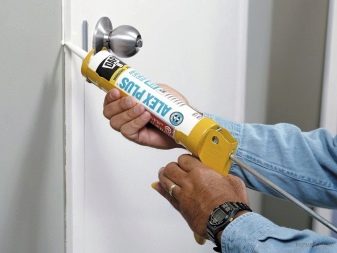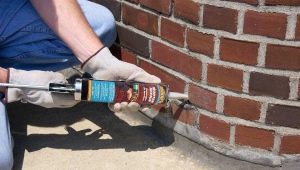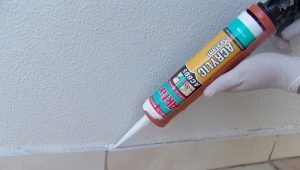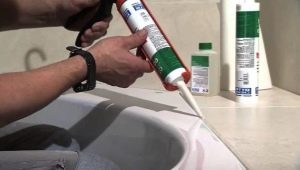Sealants: features of choice and application
Many types of construction work are completed with a sealing step. It handles all the joints and connections to make the structure completely impenetrable, as well as to give it a more neat appearance. For this, as the name suggests, a sealant is used. Currently, there are a large number of its varieties, made of different materials and performing different functions. Therefore, the choice is made depending on the tasks.
What it is?
Sealant is a special substance that looks like some kind of viscous paste that is applied to joints, seams and joints for high-quality insulation. Sealants are made of polymeric and oligomeric substances. They are able to protect the structure from the ingress of vapor, water, gases and various contaminants. The process can be as follows: the applied sealant will either harden, or remain unchanged, or evaporation of the solvent will occur.Although sealants are mainly used in construction, it does not hurt to have such a substance in the household in case of any damage or damage. For example, it will be possible to close up the gap that appears behind the radiator with a solution.
A good sealant has a good composition. This means that it is resistant to many chemicals, does not corrode, firmly attached to the surface and does not lose its elasticity. In addition, the substance must successfully withstand weather problems, because very often the sealant is applied from the street. Finally, if a substance is applied to the seams, it should not crack and form “holes”. High-quality sealant must process the seams and joints so that the layer created is durable, reliable and does not deteriorate for a long time. Typically, sealing means are used to process glass, plastic, stone, wood, and other materials. Most of them do not represent a danger to human health. Means are conveniently packaged in tubes or tubes, the first used with special pistols.
Purpose
Sealants have a wide range of applications.They are selected for sealing joints between the plumbing and the wall, to seal the gaps when installing window designs, to eliminate crevices between the logs and in many other cases. Acrylic varieties are addressed when the need arises for sealing joints in the kitchen and bathroom and for other work carried out indoors. Bituminous sealant is always selected when processing the roof. The suture option helps with the repair of the car. Silicone sealant is used almost everywhere: it is suitable for floor treatment, door installation, and when working with glass products. Finally, this universal tool can prevent water from entering the building foundation, complete the process of glazing a balcony, and fix the baseboards.
It can be concluded that the sealant is able to complete the installation of almost any structure, both indoors and out.
Kinds
There are a sufficient number of sealants, which differ in composition, and purpose, and the degree of elasticity. Depending on the available signs, they are used to solve certain problems.Depending on the composition, there are 4 types of this substance.
Silicone
Silicone sealants do well with moisture and high temperatures, so they are most often used for waterproofing connecting areas. Elastic seam, resulting from the application, can be colored or transparent, it is worth remembering that after the work will be impossible to paint it.
Among the silicone agents, the following are distinguished:
- universal, used for car repairs;
- sanitary acid resistant, designed to stop the effects of acetic acid on concrete;
- silicate - heat-resistant sealant capable of operating at temperatures reaching +1200 degrees.
Products created from silicone can be used on surfaces made of any materials, including plastic and metal. They are not afraid of changes in temperature, atmospheric phenomena, and therefore they are also used for external structures. Finally, these sealants are extremely durable and resilient. Separately, it should be mentioned vapor-permeable silicone sealant, which demonstrates additional resistance.It is very tightly attached to the material being processed, does not lose its properties under various weather transformations and is quite resistant to transformations. Finally, such a tool is quite cheap and you can quickly remove it when you make a mistake.
There are special silicone models with the so-called sanitary elements, which are fungicidal additives. They fight the appearance of fungi, bacteria and mold.
Such a sealant cannot be used with metal, but plastic structures with its help will be reliably protected. In addition, like all silicone sealants, they are flame retardant. They are able to operate at temperatures up to +1500 degrees.
Acrylic
Acrylic sealant is usually not able to strongly resist moisture, but it is chemically neutral. The elasticity of the seam of this variety is less than that of the silicone version. By color, they emit white models and color, which are most often used with wooden structures. As well as such a sealant after the procedure can be painted with acrylic paints or varnish, echoing the shade of the treated surface.Acrylic means most often used for sealing inside a house or apartment. It is also worth noting that it does not tolerate deformation well, so it should not be used on a surface capable of expanding or narrowing due to temperature fluctuations.
There is a division of substances from acrylic into two types.
- Waterproof type not very convenient for work. It is made of water-based, which, of course, is a plus in terms of environmental friendliness of the material. The tool also does not smell and, if necessary, is dissolved by the use of ordinary water. However, it cannot be used in rooms where the humidity is high and the temperature is low. After a few days, the stitches may begin to “break up” or at least crack. Therefore, such a substance should be used exclusively when repairing furniture, baseboards, plasterboard structures, or dry walls.
- Waterproof Acrylic Sealant Used for various objects: surfaces can be varnished, painted and have a slight relief. Allowed and work in cold rooms.If water gets on such a means, it will not dissolve, however, it will still not be possible to use it on constantly wetted surfaces. He is not able to cope with the strain loads. This subspecies is used for processing joints in the bathroom, toilet (in this case, it is better to buy a model with additives that prevent the appearance of fungus) or in other internal rooms. It is worth adding that he is not afraid of changes in temperature. Acrylic waterproof sealant dries within 24 hours.
Separately, it is worthwhile to dwell on such a subspecies of acrylic pastes as acrylic-latex. They create very elastic and tight seams that adapt to deformations and do not lose their function if the surface expands or contracts.
Typically, this tool is used to seal ventilation joints, facade surfaces, doors and windows. This variety can be combined with completely different materials.
Polyurethane
The most common polyurethane sealant is polyurethane foam. This type has high elasticity and ability to resist deformation.Available and adhesive characteristics. Another advantage of polyurethane is durability - the tool is able to function up to 25 years. He does not suffer from temperature extremes (can withstand from -60 to +80 degrees), or from weather manifestations.
Finally, a urethane sealant is able to work with complex objects: and aluminum, and ceramic, and stone, and even reinforced concrete. It exhibits high adhesion and adheres very well to surfaces.
The only disadvantage of this type is the relative risk to human health. Since the composition is rather complex and toxic, it is necessary to follow safety rules during operation and it is better to apply it not inside buildings, but outside. In addition, such a sealant is useless at high temperatures.
Bituminous
Bituminous sealants are distinguished by their scope. Such a solution is roofing - it is customary to use it on drainpipes, chimneys, roofs and other objects exposed to the effects of precipitation. This tool consists of rubber and bitumen and is considered one of the oldest samples.Such a sealant is not afraid of moisture, but it is not combined with negative temperatures. Finally, it can not be painted after the completion of the work. It is similar in characteristics and scope to the bitumen sealant rubber, created from synthetic rubber. Both compositions are used for roofing work, as well as for sealing joints in rooms where humidity is high.
They also create butyl rubber sealants, which are produced in the form of tapes and seals, differing in thickness and width. These tapes are elastic and have high adhesion. They are able to operate at temperatures from -45 to +150 degrees.
Butylrubber sealants are used for the construction of roof windows, as well as for carrying out roofing works. However, they do not perform well under tension and have a short shelf life of up to 5 years.
There is also a type of sealant such as thiokol. They are extremely durable and elastic, able to operate for up to 30 years. The scope of their application is engineering, shipbuilding, light industry and construction. Basically, this type is selected for log cabins. The composition is kneaded right before the start of work, and reaches its final stage within 10 days.The tool is used in all weather conditions and for processing structures of non-standard forms. It is realized in gray and black shades.
Thiocol sealants are multicomponent because they consist of 2 or 3 components, one of which is the base. This variety is considered one of the most expensive. The finished paste is used within two hours, and it can harden up to two days. It has high adhesion to many materials, is characterized by durability and strength. If we talk about the consistency, the sealant can be sold in the form of paste, mortar or putty. In turn, the substance is packaged either in a tube or in a special cartridge for a pistol, with which the syringe is combined.
Depending on the number of components, sealants are divided into such types as:
- one-component - when there is one component, the substance can be immediately applied without performing any additional actions;
- two-component - if the basis and the polemizing component are sold;
- multicomponent - if, in addition to the base and the controversial component, there are still some additives to be mixed.
According to the type of hardening, it is possible to distinguish such compositions as:
- drying - ready for use after the evaporation of water or solvent; shrinkage occurs during drying;
- curing - begin to act after all the components are connected, or exposure to liquid or air begins;
- non-hardening - in general, they do not harden, and in their consistency they resemble clay.
There are also neutral and acid sealants. The first ones do not smell and are most often combined with plastic. The latter have an unpleasant odor, but easily tolerate temperature fluctuations and have high adhesion. Finally, it is worth adding a few words about vapor-permeable sealants.
Such species not only seal, but do not prevent air exchange and evaporation of internal moisture. Most often they are used to handle doors and windows.
Colors
It is easy enough to pick up both color, and transparent sealant. If we talk about the silicone variety, then black is used with particular popularity - it is this shade that is chosen for work in cars. For technical works, red sealant is also used - it is preferred in the case of installation of industrial furnaces, engines, pumps and other similar structures.White silicone sealant is considered standard. If you want to seal the seams between the panels under the dark wood or from the tree itself, it is better to turn to a transparent sealant.
In other cases, the shade should be chosen in the same way as the grout. The color should be as close as possible to the material being processed. If the design is dark in color, then an even darker sealant is purchased. This rule is similarly valid with light details. To close the joints of individual parts of a multi-colored object is better with a colorless paste, and floor seams - darker. When the choice is made in favor of acrylic sealants, it is easy to choose a shade that fits perfectly with existing colors. For example, there are such colors as: “gray”, “larch”, “golden pine”, “honey”, “tick” and others. In addition, it is possible to order tinting in almost any shade.
Manufacturers
To ensure the quality and long-term sealing, it is recommended to buy formulations only from major manufacturers that have proven themselves in the global market.
These include the following:
- Ceresit It has the highest quality and is a manufacturer of acrylic and silicone pastes;
- "Moment" It is considered, perhaps, the most well-known brand for the Russian consumer, which sells both acrylic and silicone, and bituminous sealants;
- Ciki Fix - This is a Turkish brand that produces decent products for an adequate price;
- Belinka belles - This is a brand from Slovenia, in the range of which you can find silicone sealants;
- Tytan offers professional pastes, including those suitable for sealing roofs;
- European company Krass successfully sells products on the market based on silicone and acrylic.
- Swiss company Sika It presents various sealants, including polyurethane, which are selected for professional use as well as for serving households; pastes provide high-quality sealing and good stability;
- Company Remmers specializes in the production of acrylic, silicone and polyurethane sealants, which dry quickly, are easy to apply and have an extensive palette of possible shades;
- Sealants Penosil can be used in high humidity conditionsincluding for sealing aquariums; they are able to operate at temperatures from -40 to +100 degrees, and sometimes up to +180 degrees, and are resistant to deformation and stretching.
How to choose?
If you have to choose a tool to seal a particular surface, then first of all you need to find out where the work will be carried out: outside or indoors. Further it is better to look at the packaging - it is usually indicated there if the composition is suitable for such a purpose. Next to determine the composition and characteristics of the treated surfaces. For example, for metal and for wood, different substances will be needed. Then you should examine whether the chosen sealant is suitable for the work being done. This information can be clarified from the seller or deduct on the package. Sealant can be universal, suitable for the treatment of roofs or balconies, facades or windows - all individually.
The next step is to find out how the tool will behave under the influence of temperature., atmospheric phenomena and surface deformation, can it be painted and how long it will dry. In addition, data on the color of the composition, its working temperatures, and the requirement of "professionalism" are being studied.For example, if it is a bath, then it is necessary to have a moisture resistant agent, if a wooden floor is elastic without solvents. To seal the pipes, it is worth buying a silicone-based product that provides high adhesion and does not require pre-treatment of the surface. Silicone sealant is also suitable for a toilet bowl, but it should be applied in a special way.
It is important to study the shelf life and integrity of the package, learn about the manufacturer and read the reviews. All aspects should be taken into account, even if one should expect a strong odor or the chosen agent is completely environmentally friendly.
The surface is prepared for sealing, cleaning and degreasing. Paste from a pistol is applied with a continuous line, then a smooth seam is formed with a spatula or hands in protective gloves. At the end of the procedure, excess is removed, the plumbing remains to freeze. For the ends of wood, a means is chosen that has good adhesion, high elasticity, ability to resist deformation and vapor permeability. To fix the problems of the steering rack, you can use sealant for power steering.
Of course, it would be good to study the market prices.The cost of the sealant depends not only on its type, but also on the packaging. For example, a tube of silicone paste costs approximately 140 rubles, and a kilogram of money costs 450 rubles. The cost of a tube of acrylic paste starts at 120 rubles, and the cost of a kilogram starts at 400 rubles. For 600 milliliters of polyurethane sealant will have to pay 500 rubles, and for 310 milliliters of bitumen - 225 rubles. The cost of rubber sealant starts from 345 rubles, and bitumen-rubber - from 230 rubles.
Consumption
In order to calculate the required flow rate, for example, silicone paste per 1 meter of the seam, you will have to figure out the width and depth of the opening, which will need to be filled with a substance. These figures will depend on the material of the treated surface and the size of the joint. The depth of the seam in millimeters is multiplied by the seam width in millimeters and, thus, the flow rate in grams per 1 meter of the seam is obtained. If the seam is triangular, this indicator can be divided by 2. Paste consumption depends on the base material. If the seam between the wooden logs is to be processed, then it will be necessary to measure the thickness of the log, and divide the result by 10.
In order not to overspend, it is necessary to correctly determine the size and follow the application technologies.
Application tips
Before you begin the process of sealing, you need to learn how to use tools for applying the product. Most often, a special pistol is used for this, which is combined with the packaging. It allows you to remove the tool and apply it smoothly and carefully.
There are such varieties of this auxiliary construction:
- a skeleton pistol is most often bought for household chores, it is sold everywhere and costs an extremely small amount;
- the semi-body gun looks and works in almost the same way as the skeletal gun, but allows squeezing out a more accurate amount of sealant and protects the package from damage; due to these bonus features, it is slightly higher;
- a tubular metal pistol is used by professionals when it comes to working with sealants contained in conventional film packages instead of tubes;
- an air pistol costs about 3,000 rubles and is also used by professionals; can be connected to itunpackaged sealants, it has the ability to regulate pressure and is used for a large amount of work;
- electric gun, called the battery, is able to function with different types of sealants, alternate them and accurately apply to the place of the joints; thanks to the automatic piston, drops and excess do not appear.
When the sealant is used at home, of course, the question is how important it can be scrubbed if necessary.
The following methods are worth considering:
- a scraper or spatula, with the help of which, applying physical effort, the excess means is simply scraped off;
- the shops sell various chemicals specifically designed for this purpose; they either eliminate the traces of the old solution, or soften the existing ones.
When choosing a sealant for a metal roof, it is necessary to make sure that it is able to resist high and low temperatures, precipitation, tolerate moisture, be elastic, and also quickly harden. For example, a good solution would be a composition of silicone, intended for the treatment of the roof.If the structure is located in areas that are not characterized by high temperatures, you can pay attention to the paste based on polyurethane. It will not only cope with the task of isolating the seams, but will also increase the level of coupling between the separate parts of the roof.
Before applying sealants, it is necessary to clean the joints. It is necessary to remove old paint and varnish, sand and degrease the processed material. In addition, dirt and dust are removed. If no pre-cleaning has been done, the paste may peel off, and the seam may become depressurized.
About how to work with silicone, see the following video.
